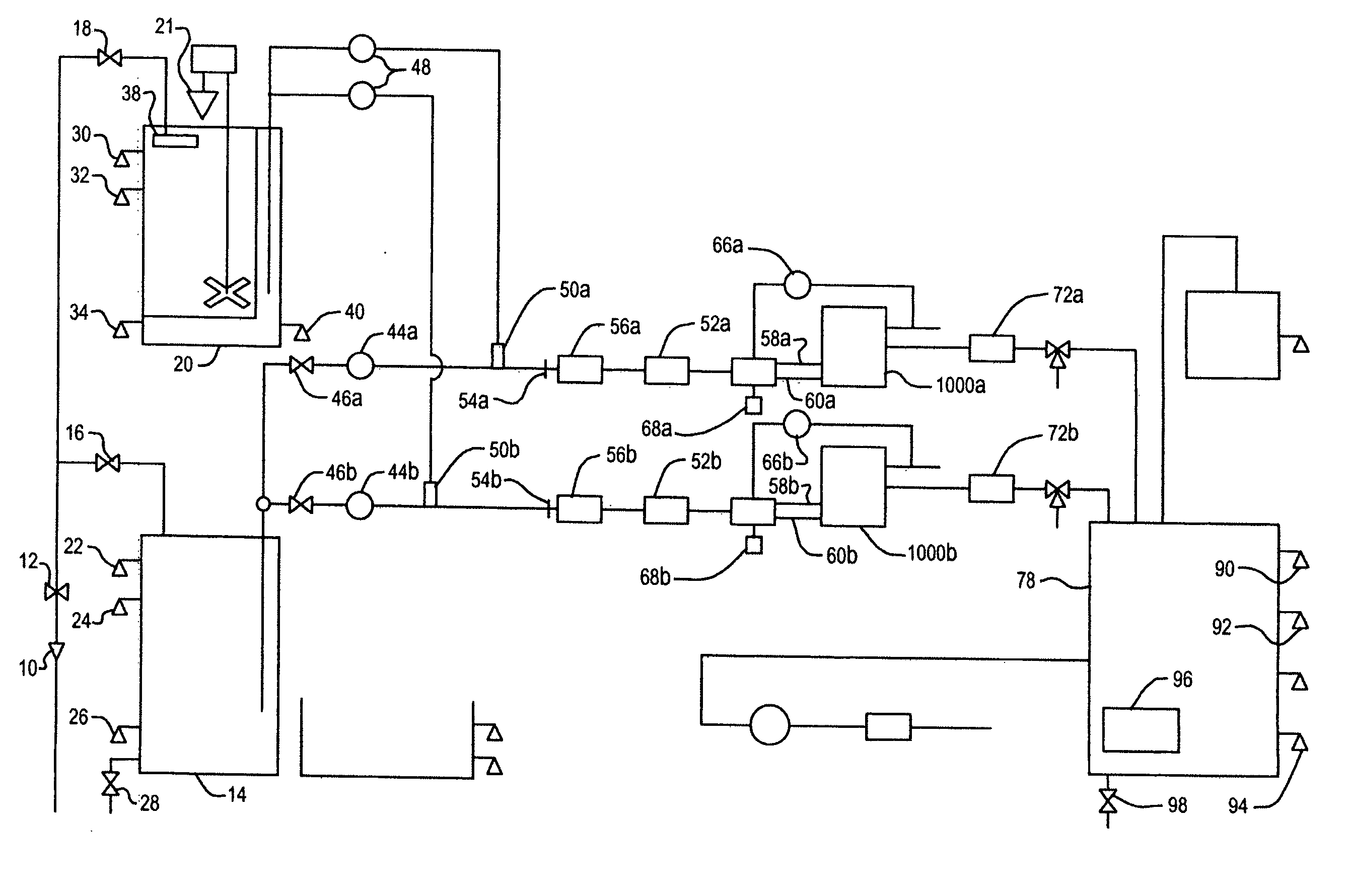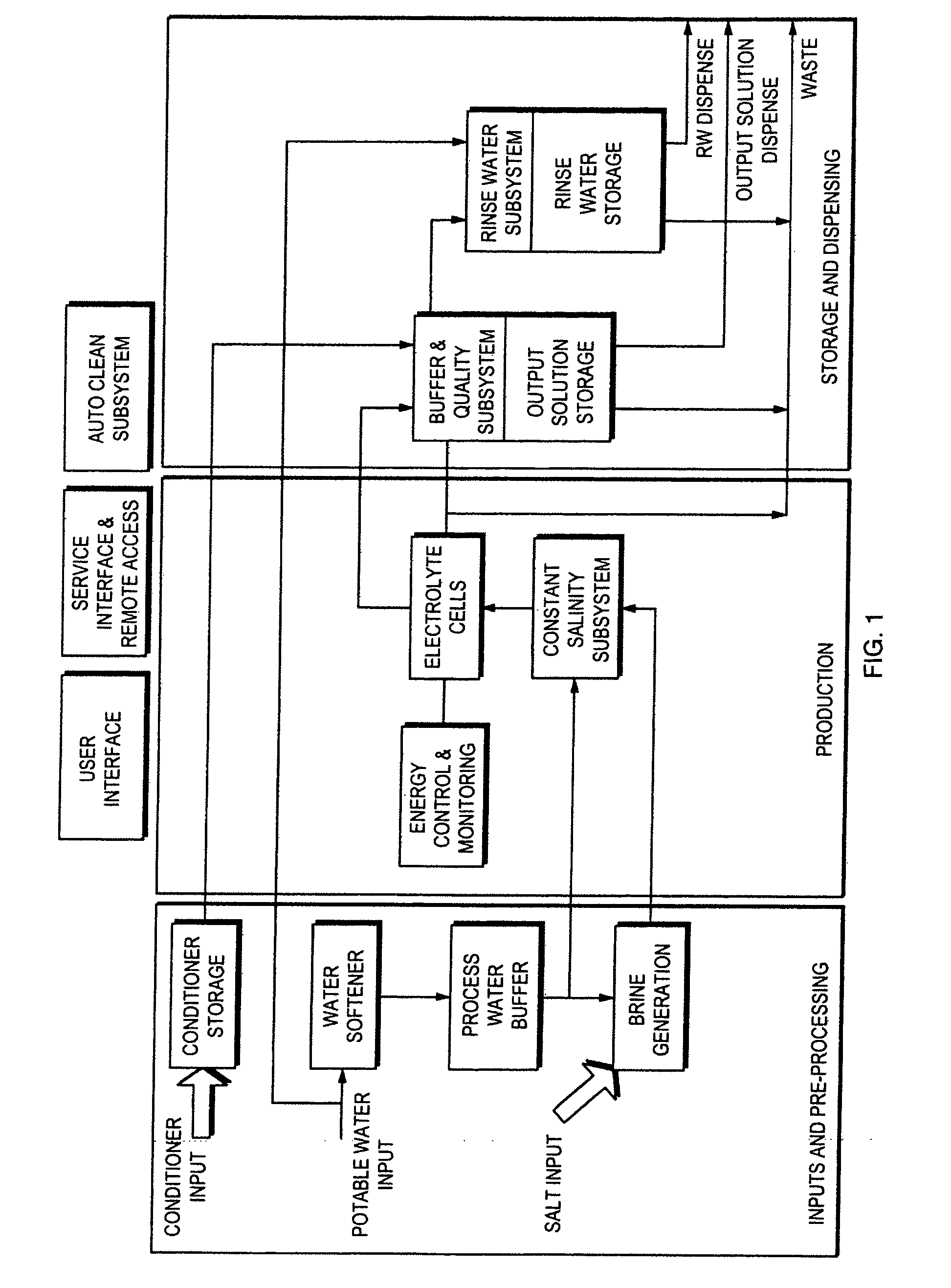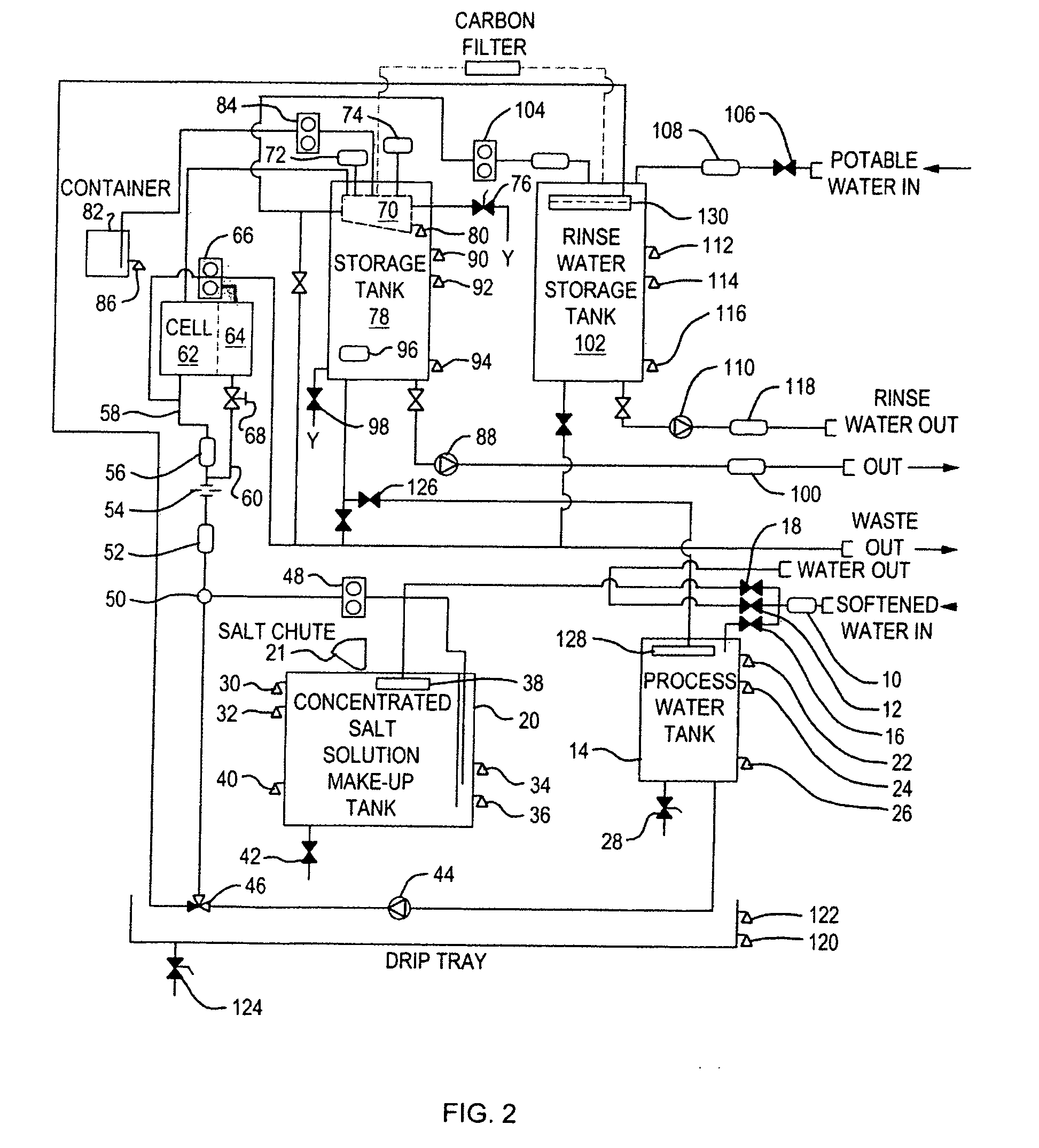Electrochemical treatment of an aqueous solution
a technology of electrochemical treatment and aqueous solution, which is applied in the direction of electrolysis components, water treatment parameter control, and membranes, etc., can solve the problems of asthma and dermatitis in healthcare staff, inconvenient for some medical devices, and insufficient biocidal treatment of solutions, so as to achieve the effect of substantially eliminating the risk of mistaken use of solutions and increasing efficiency
- Summary
- Abstract
- Description
- Claims
- Application Information
AI Technical Summary
Benefits of technology
Problems solved by technology
Method used
Image
Examples
Embodiment Construction
[0033] Referring first to FIG. 1, the schematic outline of the invention is broken down into three main processing stages, namely an inputs and pre-processing stage, a production stage and a storage and dispensing stage. While referred to as stages, it will of course be appreciated that the process of the invention may be carried out continuously.
[0034] In the first (inputs and pre-processing) stage, there is an input of potable water which, for the purpose of generating saline solution for use in the electrolytic cell, is first passed through a water softener zone where excessive magnesium and calcium ions are removed. The softened water is then passed into a process water buffer zone where it is held until required for use in the production of brine. Potable water input is also passed directly to the storage and dispensing stage for use in the preparation of bacteria-free rinse water, but for this purpose there is no need for the water to be softened prior to use.
[0035] The firs...
PUM
| Property | Measurement | Unit |
|---|---|---|
| temperature | aaaaa | aaaaa |
| temperature | aaaaa | aaaaa |
| inner diameter | aaaaa | aaaaa |
Abstract
Description
Claims
Application Information
 Login to View More
Login to View More - Generate Ideas
- Intellectual Property
- Life Sciences
- Materials
- Tech Scout
- Unparalleled Data Quality
- Higher Quality Content
- 60% Fewer Hallucinations
Browse by: Latest US Patents, China's latest patents, Technical Efficacy Thesaurus, Application Domain, Technology Topic, Popular Technical Reports.
© 2025 PatSnap. All rights reserved.Legal|Privacy policy|Modern Slavery Act Transparency Statement|Sitemap|About US| Contact US: help@patsnap.com



